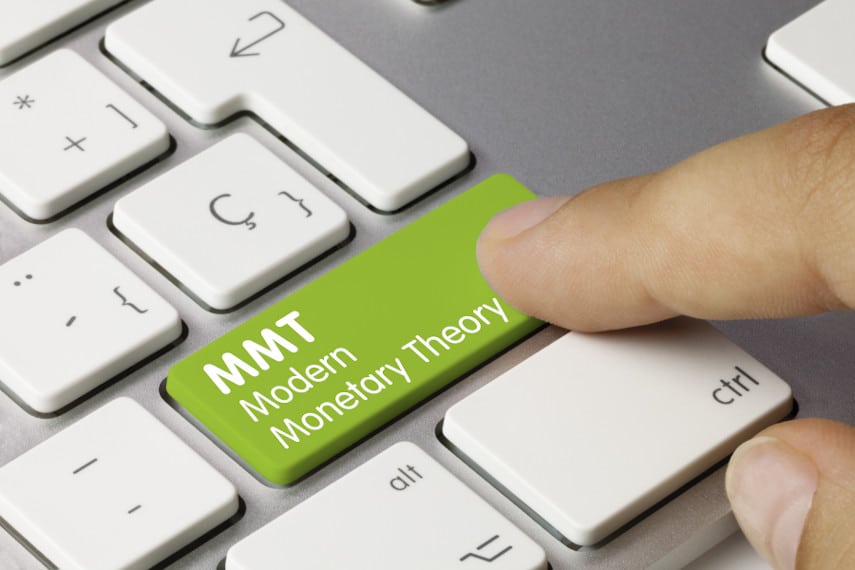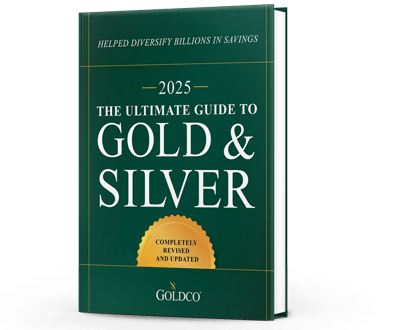6 Indicators of a Potential Recession
It seems that in the media today there are more and more mentions of the dreaded R-word: recession With growing economic uncertainty, the threat of potential recession seems to be growing as...
Economy

When Alexandria Ocasio-Cortez (AOC) was first elected to Congress in 2018, she was part of a left-wing wave that handed control of Congress to Democrats. AOC’s views were among the most radical of any Congressman, and discussion of her platform brought renewed attention to the concept of Modern Monetary Theory (MMT). The essence of MMT is inflationism, a belief that government creation of money can bring about prosperity. And whether most people realize it or not, MMT is here, and it’s here to stay.
Some commentators have even coined a new term for it: Bidenomics. It’s a play on Abenomics, the Japanese monetary policy of unlimited money creation, unlimited asset purchases and, as we’ve seen in the example of Japan, complete and utter failure. And Bidenomics promises to be just as big a failure in the US as Abenomics has been in Japan.
Let’s look at what MMT is and what it teaches, based on the five main tenets found on MMT’s Wikipedia page. MMT holds that a government that issues its own fiat money:
Now let’s explain these in plain English.
This isn’t really a radical concept, but more of a description of how governments already operate. There are three ways governments can raise money: collecting taxes, issuing debt, or creating new money (i.e. inflation.)
Because raising taxes isn’t popular with voters, and issuing debt can result in having to pay higher interest rates, most governments today resort to inflation to pay their bills. Through cooperation with central banks, quantitative easing and large-scale asset purchases have been the preferred method of stimulus. Governments will often issue new debt, then central banks will purchase that debt, monetizing it while keeping it away from debt markets and preventing interest rates from rising.
This is somewhat debatable, as inflation is a surreptitious form of default. It’s an acknowledgement that the government is unable to pay back its debt in current money, but instead has to devalue the currency in order to pay back its debt with devalued currency. If you pay back $100 of debt with $100 that only buys what $90 used to, you’ve actually cheated your creditor by not paying back what you really borrowed.
This relies on the modern definition of inflation, which is a rise in prices. In the traditional understanding of inflation, inflation is an increase in the money supply, the effect of which is an increase in overall prices.
The statement is true enough in the modern sense of the term, as governments generally fear that too much money creation will send prices spiraling out of control. Central bank attempts at managing monetary injections in the aftermath of the 2008 financial crisis largely kept prices from rising, as money that was injected generally remained tied up in the form of bank reserves and didn’t circulate into the economy.
But the Federal Reserve today is trying to boost inflation, and money supply figures have increased astronomically. With more fiscal stimulus coming from Congress, and a high likelihood that the Fed will monetize that spending as well, we could start seeing massive inflation in the coming months.
This is a bizarre assertion, as it fails to understand the root cause of inflation and of rises in the price level. It also fails to understand that taxation doesn’t remove money from the financial system, it merely redistributes it. The government doesn’t levy taxes and destroy whatever money it collects; it spends it. So the money remains in the financial system, it’s just being spent by someone else. At best, the effect on inflation from this taxation would be nil. And depending on who bears the burden of that taxation, the effects of it could be quite destructive.
An orthodox MMTer might believe this to be the case, as MMT’s goal is to have the Treasury issue Treasury notes directly, rather than go through the process of issuing bonds that are then monetized by the Federal Reserve. What is happening today is that Congress is passing spending bills, Treasury issues debt, and then the Fed purchases that debt with newly created money, holding the new debt on its balance sheet as an asset. This is the Fed’s attempt to keep this newly issued debt from hitting debt markets, which would have the potential to drive interest rates up.
The effect of what is happening today isn’t much different than what were to happen if the Treasury were to issue notes directly. The only difference is that the Fed holds assets on its balance sheet. But the Fed could just as easily erase that debt, decreasing the size of its balance sheet but leaving the money it created in circulation, and thus the effect would be exactly the same as what is taking place today.
What is being termed Bidenomics is nothing more than massive amounts of fiscal spending. Its proponents believe that spending money is the key to prosperity. They’re forecasting an economic boom from all this money being spent, a return to a booming economy and, eventually, full employment. But if the government spending money is the key to economic prosperity, why haven’t previous governments done this?
The answer is because, in the long run, it doesn’t work. Massive amounts of spending or money creation can juice the economy in the short term, but in the long run the effects are rising prices, malinvestment of resources, and eventually recession or depression. Those pushing for the policies of massive spending are hoping that they can reap the political benefits of the short-term economic boom, and hoping that they’ll be out of office before the negative effects of that spending take place, so that they can escape the blame.
Abenomics in Japan was built upon “three arrows”: fiscal spending, monetary stimulus, and structural reforms. As expected, the structural reforms were largely impossible to accomplish, and thus the Japanese government relied on fiscal and monetary stimulus to boost its economy. The result?
The Bank of Japan’s balance sheet has increased from 136 trillion yen at the beginning of 2012 to 709 trillion yen today. Japan’s debt to GDP ratio is 266%, more than double the United States’ ratio. And annual GDP growth has been 2% or less since then, with one of the worst performance streaks in recent Japanese history. Was all that monetary and fiscal stimulus really worth it to accomplish just about no economic growth and a massive increase in indebtedness?
Japan has been a basket case since 1990, continually looking to monetary and fiscal policy to boost economic growth. Yet time and again those policies have failed. And now the US is following those same policies, failing to learn the lessons from Japan’s failures.
When you hear the term “Bidenomics” just remember that it really means one thing: endless money creation. Whether or not it conforms to everything MMTers want, it’s MMT in just about every respect. Debt no longer matters, because the government can’t default, especially not when the central bank is monetizing all the new debt that is being created. Our society is looking more and more like Weimar Germany, most especially in the monetary and fiscal arena. And American consumers and investors will suffer from the fallout.
The massive amount of stimulus spending that has taken place to combat COVID lockdowns will very likely lead to a severe increase in prices throughout the economy. News reports already indicate that the prices of food, housing, and energy are rising, pinching the pocketbooks of millions of American families. And the problem could get worse as prices continue to rise as these trillions of dollars of newly created money continue to enter the economy.
Conventional investment assets could fare poorly in this environment too. Bonds will lose value as the dollars in which they are paid back become increasingly worthless. Stocks may not gain enough to counteract inflation, or they may finally succumb to the long-awaited stock market crash. And everyone knows that money in the bank always loses value to inflation; the higher inflation rises, the more value it loses. So what is left?
The smart money has already been looking to alternative investments such as gold to protect wealth and value. Gold traditionally performs well during times of economic turmoil and high inflation. Its performances during the stagflation of the 1970s and the 2008 financial crisis were incredible, helping many investors weather those times of crisis. With the US economy possibly on the verge of yet another crisis, gold could play an important role in protecting investors against the negative effects of that crisis.
Many investors today continue to trust gold to protect their assets, particularly their retirement savings. And an increasingly popular method of doing that is through a gold IRA. With a gold IRA, you can invest in and own physical gold coins and bars while still enjoying the same tax advantages as any other IRA retirement account. Even better, if you have existing retirement savings that you want to protect against inflation, you can transfer or roll over those assets from a 401(k), TSP, IRA, or similar account into a gold IRA without tax consequences.
With inflation starting to rise and increased fiscal stimulus threatening to shoot prices higher, can you afford to go any longer without protecting your hard-earning savings? Don’t let decades of hard work and sound investments go to waste. Contact Goldco today to learn more about how you can protect your wealth against inflation with the soundness and security of gold.

